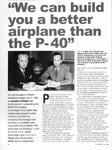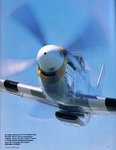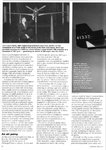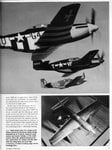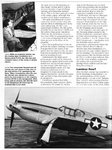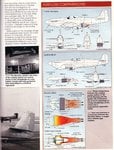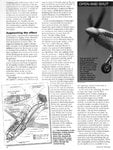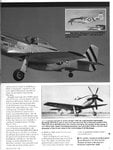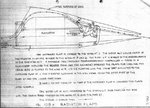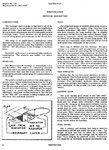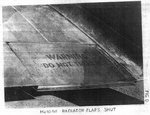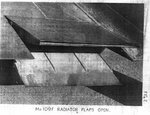Navigation
Install the app
How to install the app on iOS
Follow along with the video below to see how to install our site as a web app on your home screen.
Note: This feature may not be available in some browsers.
More options
You are using an out of date browser. It may not display this or other websites correctly.
You should upgrade or use an alternative browser.
You should upgrade or use an alternative browser.
Meredith Effect and the P-51
- Thread starter Colin1
- Start date
Ad: This forum contains affiliate links to products on Amazon and eBay. More information in Terms and rules
More options
Who Replied?- Thread starter
- #2
Colin1
Senior Master Sergeant
- Thread starter
- #3
Colin1
Senior Master Sergeant
- Thread starter
- #4
Colin1
Senior Master Sergeant
- Thread starter
- #5
Colin1
Senior Master Sergeant
- Thread starter
- #6
Colin1
Senior Master Sergeant
- Thread starter
- #7
Colin1
Senior Master Sergeant
- Thread starter
- #8
Colin1
Senior Master Sergeant
MikeGazdik
Senior Airman
Great article ! Thanks for posting.
Glider
Captain
I am waiting for Soren to join in and am heading for the bunkers
Kurfürst
Staff Sergeant
- Thread starter
- #12
Colin1
Senior Master Sergeant
Hi Kurfurst
interesting post
but I'm not seeing any by-pass duct for the boundary layer over the radiator
Do you have any more on this? I've not read any claims by German designers to have harnessed Meredith Effect. Do you have any figures for available thrust?
interesting post
but I'm not seeing any by-pass duct for the boundary layer over the radiator
Do you have any more on this? I've not read any claims by German designers to have harnessed Meredith Effect. Do you have any figures for available thrust?
Kurfürst
Staff Sergeant
The bypass duct is there, the small arrows show the path of the airflow.
There is also a good description in the US evaluation report of the 109F (which is based on British reports). Also note the seperate duct clearly visible on the photos of the 109F exit flaps - note the seperate ducting on the upper exit flap.
The opening of radiator flaps were controlled automatically by a thermostat measuring coolant temperature but could be overridden manually by the pilot. A good illustration of how it opens and closes during a climb can be seen on this graph from an 1942 test report involving a Bf 109G-1, WNr. 14 026:

As for the actual thrust figures from this system, I have not seen any yet, but the principle of operation is clearly the same as on the Mustang (variable outlet flaps, and in addition, the inlet flaps are also variable). The system on the 109E OTOH is very much the same as on the Spitfire (though the exit flaps were variable in exit area, there was no variable inlet flaps yet, and the opening was set manually). Junkers I believe was using such systems already in the 1920s (or was it early 1930s..?) IIRC.
There is also a good description in the US evaluation report of the 109F (which is based on British reports). Also note the seperate duct clearly visible on the photos of the 109F exit flaps - note the seperate ducting on the upper exit flap.
The opening of radiator flaps were controlled automatically by a thermostat measuring coolant temperature but could be overridden manually by the pilot. A good illustration of how it opens and closes during a climb can be seen on this graph from an 1942 test report involving a Bf 109G-1, WNr. 14 026:
As for the actual thrust figures from this system, I have not seen any yet, but the principle of operation is clearly the same as on the Mustang (variable outlet flaps, and in addition, the inlet flaps are also variable). The system on the 109E OTOH is very much the same as on the Spitfire (though the exit flaps were variable in exit area, there was no variable inlet flaps yet, and the opening was set manually). Junkers I believe was using such systems already in the 1920s (or was it early 1930s..?) IIRC.
Attachments
- Thread starter
- #14
Colin1
Senior Master Sergeant
Thanks
that's alot clearer
As a system, it has all the hallmarks of Teutonic engineering thoroughness but it seems (to me) to be a clever way of cooling, not a method for harnessing Meredith Effect.
I would postulate that Atwood's theory that other attempts failed because of incorrect exhaust aperture would apply here - the exit seems too large and not of the correct shape for an efficient aperture, for a radiator that is too small to build up enough back pressure.
that's alot clearer
As a system, it has all the hallmarks of Teutonic engineering thoroughness but it seems (to me) to be a clever way of cooling, not a method for harnessing Meredith Effect.
I would postulate that Atwood's theory that other attempts failed because of incorrect exhaust aperture would apply here - the exit seems too large and not of the correct shape for an efficient aperture, for a radiator that is too small to build up enough back pressure.
- Thread starter
- #15
Colin1
Senior Master Sergeant
Kurfurst
is there any chance you could drop your pictures to 850 pixels (or thereabouts)?
is there any chance you could drop your pictures to 850 pixels (or thereabouts)?
Yes
Meredith Effect seems to be a classical case of a big secret that enemy already knew. Still IMHO, as a total layman, scoop was probably a more effective in securing a smooth air flow but of course the scoop itself produced some turbulence. Maybe Brits were right, see the last sentence in their valuation, that the main reason for 109F boundary layer bypass was to minimaze radiator area and so drag. Downside of 109 system was that the large radiator flaps had a big effect on max speed when fully open, up to 50kmh, On the other hand in LaGG-3, which had underfuselage scoop and a radiator flap somelike that in P-51, the effect of fully open radiator flap was only up to 15kmh, both effects from Finnish tests.
Juha
Meredith Effect seems to be a classical case of a big secret that enemy already knew. Still IMHO, as a total layman, scoop was probably a more effective in securing a smooth air flow but of course the scoop itself produced some turbulence. Maybe Brits were right, see the last sentence in their valuation, that the main reason for 109F boundary layer bypass was to minimaze radiator area and so drag. Downside of 109 system was that the large radiator flaps had a big effect on max speed when fully open, up to 50kmh, On the other hand in LaGG-3, which had underfuselage scoop and a radiator flap somelike that in P-51, the effect of fully open radiator flap was only up to 15kmh, both effects from Finnish tests.
Juha
- Thread starter
- #17
Colin1
Senior Master Sergeant
I'm not seeing that in any German designs at any stage of the war, where are you seeing it?Meredith Effect seems to be a classical case of a big secret that enemy already knew
This would further bear out Atwood's claims that in order to recover the cooling losses, the exhaust aperture is everything.Downside of 109 system was that the large radiator flaps had a big effect on max speed when fully open, up to 50kmh, On the other hand in LaGG-3, which had underfuselage scoop and a radiator flap somelike that in P-51, the effect of fully open radiator flap was only up to 15kmh, both effects from Finnish tests
It's Km/h; Kilometres per hour (Kilometres divided by 1 hour).
Kmh; Kilometre hours (Kilometres multiplied by 1 hour) would yield a different value, it if existed.
- Thread starter
- #19
Colin1
Senior Master Sergeant
Me tooI'm a layman on Meredith Effect, but I'd not be surprised if Germans also with all their theoretical knowledge knew the effect
but I've not read or seen of any German design that openly claims to have actually harnessed the effect. Atwood does mention in his article that Willi Messerschmitt was sniffing around the P-51 design's characteristics for the additional speed but never quite figured it out; I would say history lends an awful lot of weight to that argument.
- Thread starter
- #20
Colin1
Senior Master Sergeant
Removed
Users who are viewing this thread
Total: 1 (members: 0, guests: 1)
Similar threads
- Replies
- 9
- Views
- 879

